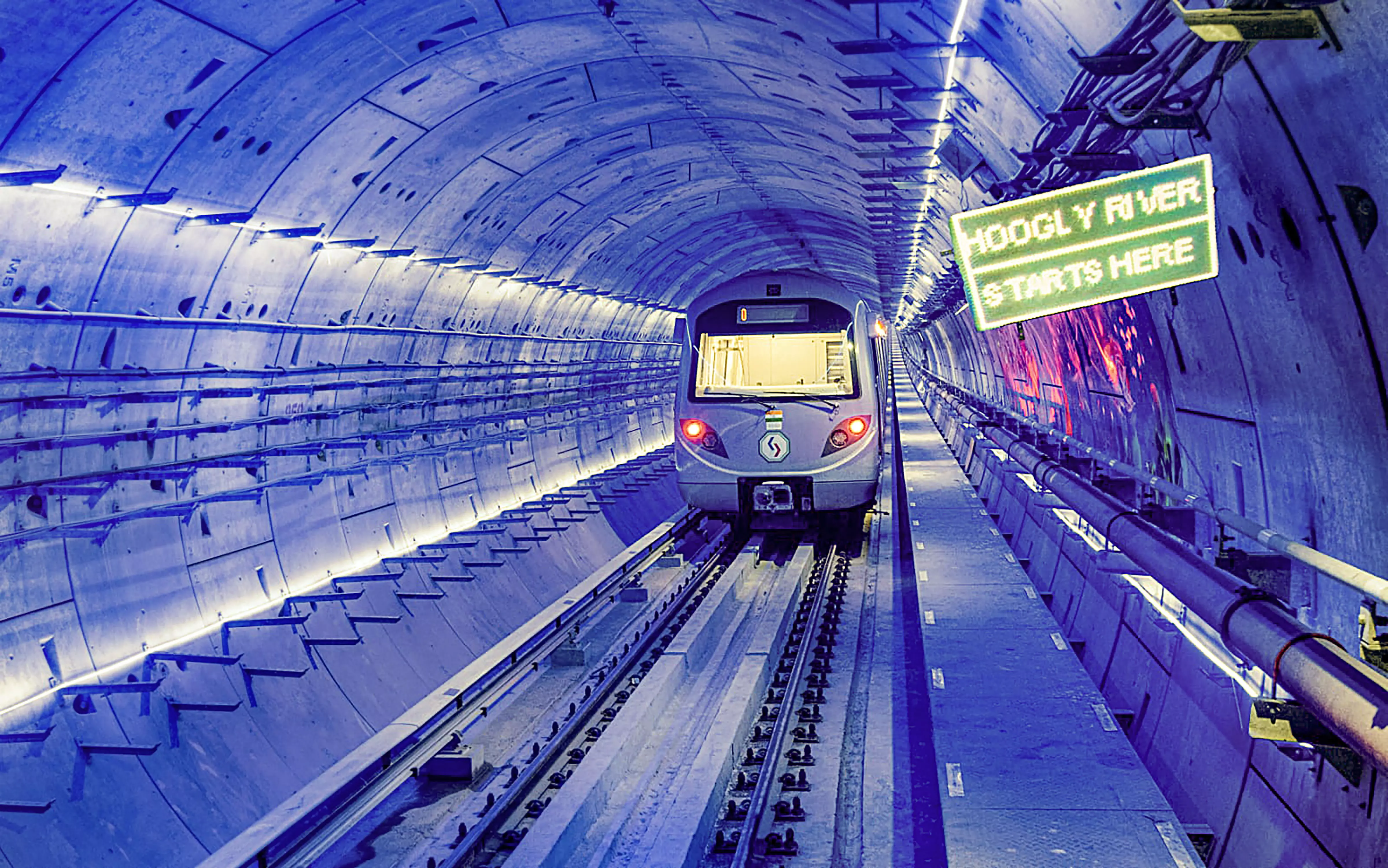
India's first underwater metro train in Kolkata. PTI
India's first underwater metro: Kolkata passengers enjoy 'awesome' experience
PM Modi inaugurated Kolkata metro's Esplanade-Howrah Maidan section and rode the train.

The inaugural journey of India's first underwater metro in Kolkata delighted passengers on Wednesday (March 6) with special light effects and fish paintings, offering a lifelike experience as they looked out of the train's windows in anticipation of glimpsing real aquatic life beneath River Hooghly.
Prime Minister Narendra Modi on Wednesday inaugurated Kolkata metro's Esplanade-Howrah Maidan section that passes under the river and took a ride on the inaugural train while interacting with more than 200 school children and some construction workers accompanying him.
When the driver of the train announced that it was entering the river part of the tunnel, the riders looked through the windows out of curiosity and were exhilarated by the view outside.
"The paintings of fishes and the lights have been done so beautifully that for a moment I thought it was real. The experience was awesome," said Piyush, a student of Alipore Kendriya Vidyalaya said.
Supreet Kaur, a teacher from the same school said that several students made paintings reflecting the cultural and heritage aspects of Kolkata and brought these to this trip to show their love for the city.
Another school student, Bandish Mukherjee, said, "I was excited for this ride because I read that Howrah metro station is the deepest in the country. This trip will be a memorable one for me." Two tunnels, running parallel to each other, are part of the 4.8-km Esplanade-Howrah Maidan stretch of the East-West Corridor and pass under the Hooghly river, connecting Kolkata and Howrah. The stretch also has the deepest metro station in the country -- the Howrah Maidan station -- at 32 metres below the ground.
The tunnels, at a depth of 37 meters below the river, are engineering marvels due to their depth, curvature, design and uncertain nature of the under-river soil.
In a post on X, the prime minister also spoke about his experience of travelling through the underwater tunnel.
"The metro journey was made memorable thanks to the company of these youngsters and those who worked on this project. We also travelled through the tunnel under the Hooghly river." "It's a very special day for the people of Kolkata as the city's metro network gets significantly enhanced. Connectivity will get a boost and traffic will get decongested. It's a proud moment that the Howrah Maidan-Esplanade Metro section has the first underwater metro transportation tunnel under any major river in our country," he said.
Modi said, "I bow to 'Jan Shakti' and will keep serving them with renewed vigour." The East-West Metro Corridor project, which starts from Sector V in Salt Lake and ends at Howrah Maidan, covers a distance of 16.6 km out of which 10.8 km is underground.
"At the moment, it is operational in two parts. Metro services are available from Salt Lake Sector V to Sealdah and from Esplanade to Howrah Maidan. The Sealdah-Esplanade section is still under construction and it will take about a year to operationalise. Once it is done, it would make the whole East-West corridor as one," a senior railway official said.
According to Metro Railway, this corridor was identified in the city's masterplan way back in 1971. However, the experience of India's first metro in Kolkata itself and the success of the Delhi metro network provided enough technical support and showed the way for the planners to sanction it in July 2008.
"That’s how the fascinating journey of building the East–West corridor began. This line will connect Howrah and Sealdah railway stations, two of the busiest rail stations in the world,” said Kausik Mitra, the Chief Public Relation Officer of Kolkata Metro Railways.
People getting down at Howrah railway station will be immensely benefitted by the metro services. This stretch will boost the mass transport scenario of the city and also solve the traffic congestion problem and improve air quality, he added.
(With agency inputs)

